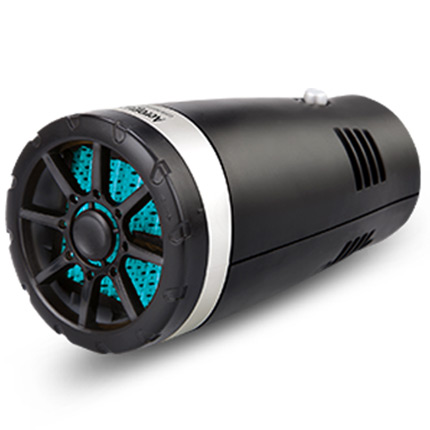clutch cable assembly
Understanding Clutch Cable Assemblies Function, Types, and Importance
The clutch cable assembly is an essential component of manual transmission vehicles, playing a vital role in the operation of the clutch system. This assembly facilitates the engagement and disengagement of the clutch, allowing the driver to shift gears smoothly while driving. In this article, we will delve into the intricacies of clutch cable assemblies, their construction, types, installation, maintenance, and their significance in automotive performance.
What is a Clutch Cable Assembly?
A clutch cable assembly consists of a cable that connects the clutch pedal in the driver's compartment to the clutch release mechanism at the transmission. When the driver presses the clutch pedal, the cable transmits the force to disengage the clutch, enabling smooth gear changes. The clutch cable assembly generally includes several components the cable itself, protective casing, and various fittings such as brackets and connection points.
Construction of a Clutch Cable Assembly
The core of a clutch cable assembly is made of high-strength steel wire. This wire is encased in a protective sheath, often made of plastic or rubber, which reduces friction and protects the cable from environmental damage. The cable terminates at each end with fittings one that connects to the clutch pedal and another that connects to the clutch fork or release lever at the transmission.
Over the years, advancements in materials and design have led to the development of high-performance clutch cables that offer improved durability and responsiveness. Some modern vehicles may use hydraulic systems instead of cables, but the traditional clutch cable assembly remains prevalent in many manual transmission vehicles.
Types of Clutch Cable Assemblies
Clutch cable assemblies can be categorized based on their design and application. Common types include
1. Standard Clutch Cables Commonly found in most manual vehicles, these cables are designed for everyday use, providing reliable performance under standard driving conditions.
2. Heavy-Duty Clutch Cables Designed for high-performance vehicles, heavy-duty cables are constructed to withstand extreme conditions and increased loads, making them suitable for racing applications or heavily-loaded vehicles.
3. Adjustable Clutch Cables Some clutch cable assemblies feature an adjustable mechanism that allows drivers or mechanics to fine-tune the tension in the cable. This adjustability can enhance pedal feel and improve shifting performance.
Installation of Clutch Cable Assemblies
clutch cable assembly

Installing a clutch cable assembly requires careful attention to detail to ensure proper function and safety. Here are the general steps involved in the installation process
1. Preparation Begin by gathering the necessary tools and materials, including a new clutch cable assembly, wrenches, and pliers. Ensure that the vehicle is parked on a flat surface and that the engine is turned off.
2. Removing the Old Cable Disconnect the old cable from both the clutch pedal and the transmission. This may involve removing brackets, clips, or other retaining components.
3. Installing the New Cable Feed the new cable through the designated routing path, ensuring it is well-protected from heat sources and moving parts. Connect one end of the cable to the clutch pedal and the other end to the clutch release mechanism.
4. Adjustment and Testing After installation, adjust the cable tension if necessary. Press the clutch pedal several times to ensure smooth operation and check for any unusual noises or friction.
Maintenance of Clutch Cable Assemblies
Regular maintenance of clutch cable assemblies is crucial for optimal vehicle performance. Signs of wear and tear include difficulty in shifting gears, a spongy or unresponsive clutch pedal, or visible fraying of the cable. To maintain the clutch cable assembly
- Inspections Regularly inspect the cable for signs of wear or damage. Pay attention to the attachment points and ensure they are secure.
- Lubrication If applicable, lubricate the cable to reduce friction and wear. Use appropriate lubricants recommended by the manufacturer.
- Timely Replacement If any issues are detected, replace the clutch cable assembly promptly to avoid further damage to the clutch system or transmission.
The Importance of Clutch Cable Assemblies
A functioning clutch cable assembly is vital for a smooth driving experience. A malfunctioning cable can lead to gear-shifting issues, which may compromise vehicle safety and performance. Regular maintenance not only prolongs the life of the cable but also ensures that the vehicle remains reliable and efficient.
In conclusion, the clutch cable assembly is a fundamental component that plays a critical role in the operation of manual transmission vehicles. Understanding its construction, types, installation, and maintenance can help drivers appreciate the importance of this component and ensure their vehicle operates at its optimal best. Whether you’re a proud classic car enthusiast or rely on a modern manual vehicle for your daily commute, maintaining the clutch cable assembly should always be on your automotive checklist.
-
Workings of Clutch Pipe and Hose SystemsNewsJun.04,2025
-
The Inner Workings of Hand Brake Cable SystemsNewsJun.04,2025
-
The Secrets of Throttle and Accelerator CablesNewsJun.04,2025
-
The Hidden Lifeline of Your Transmission Gear Shift CablesNewsJun.04,2025
-
Demystifying Gear Cables and Shift LinkagesNewsJun.04,2025
-
Decoding Clutch Line Systems A Comprehensive GuideNewsJun.04,2025
